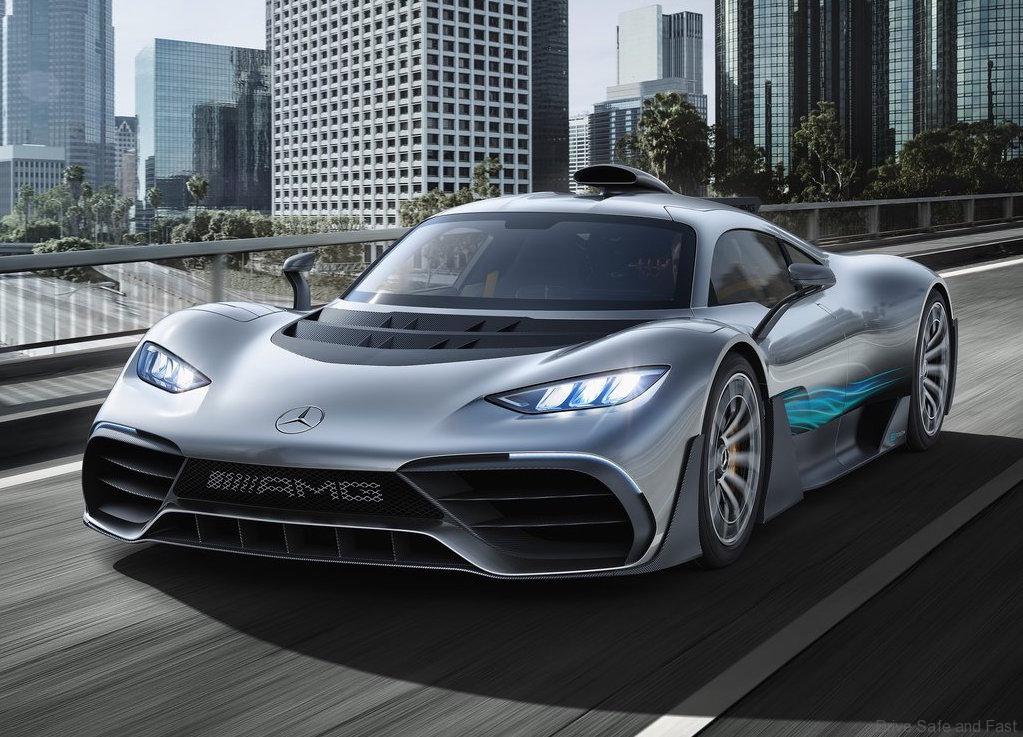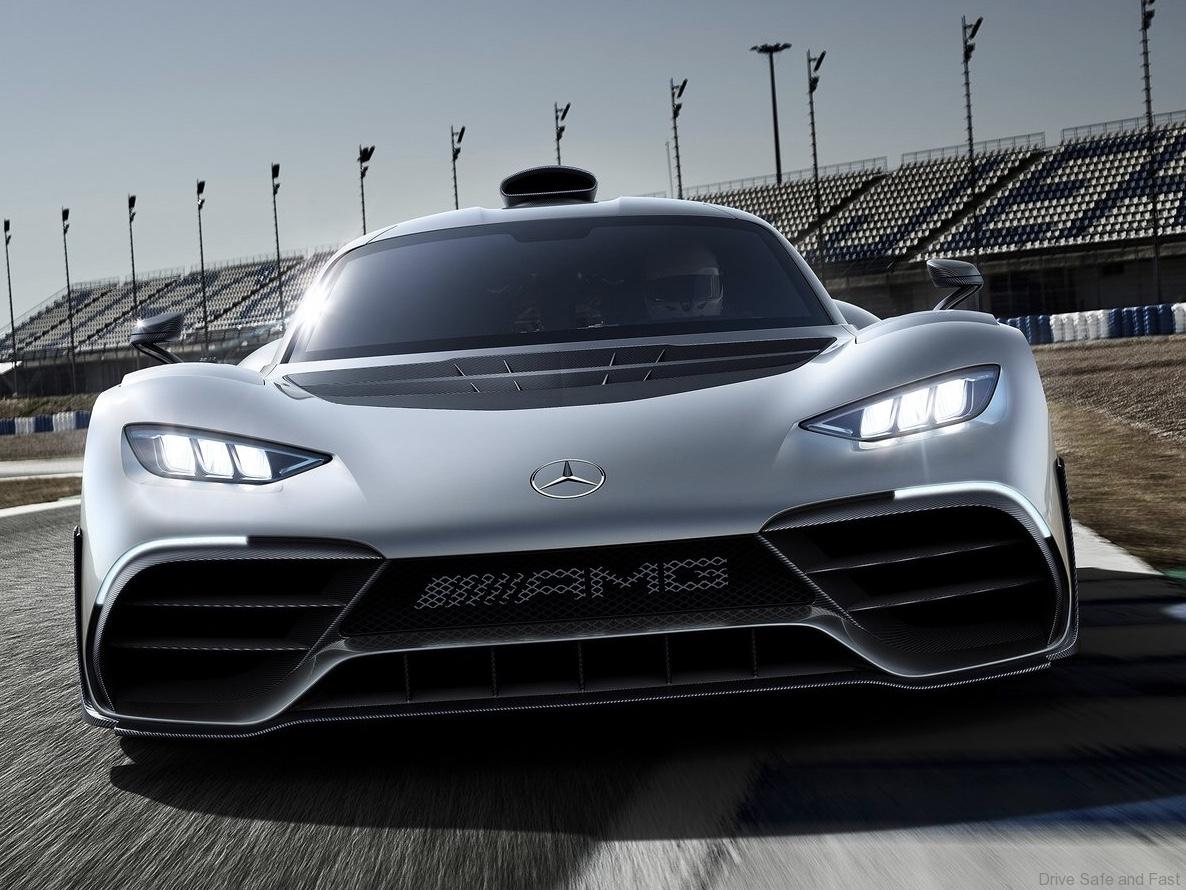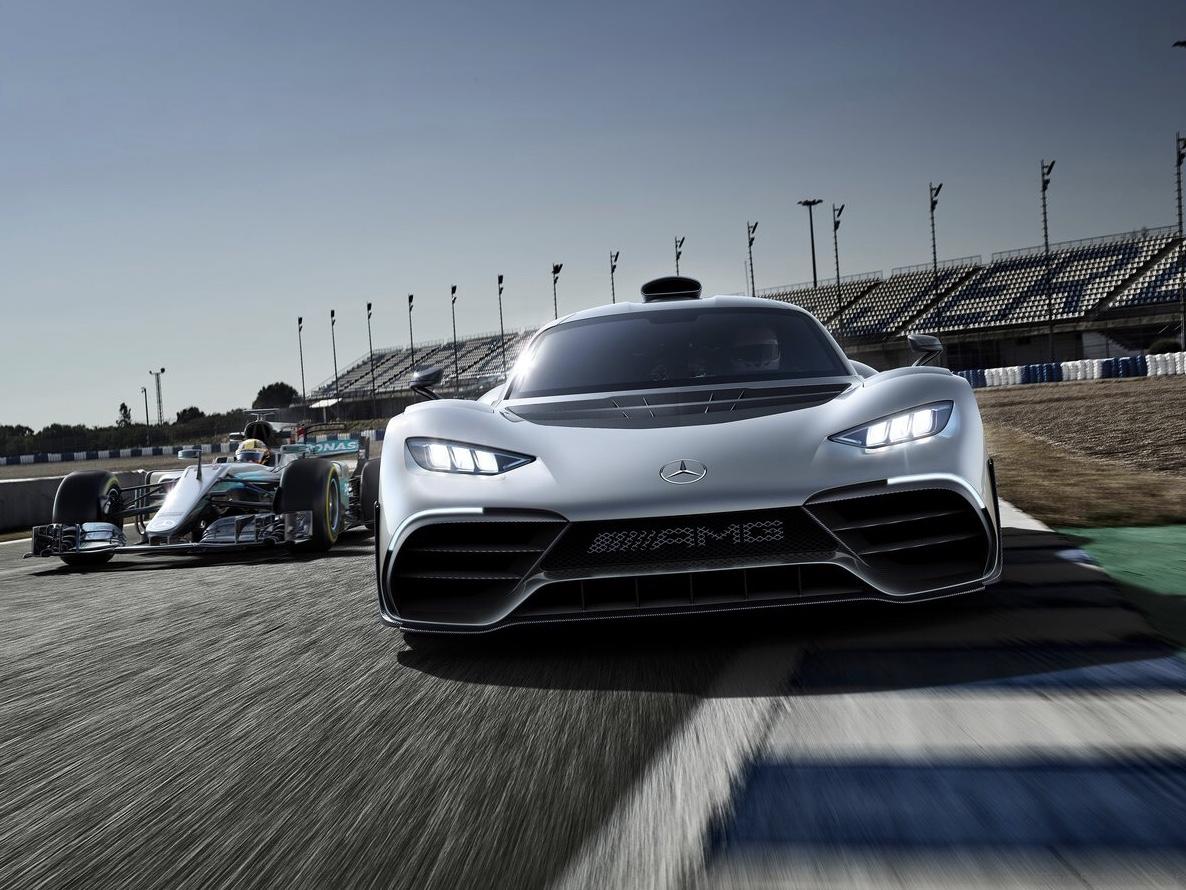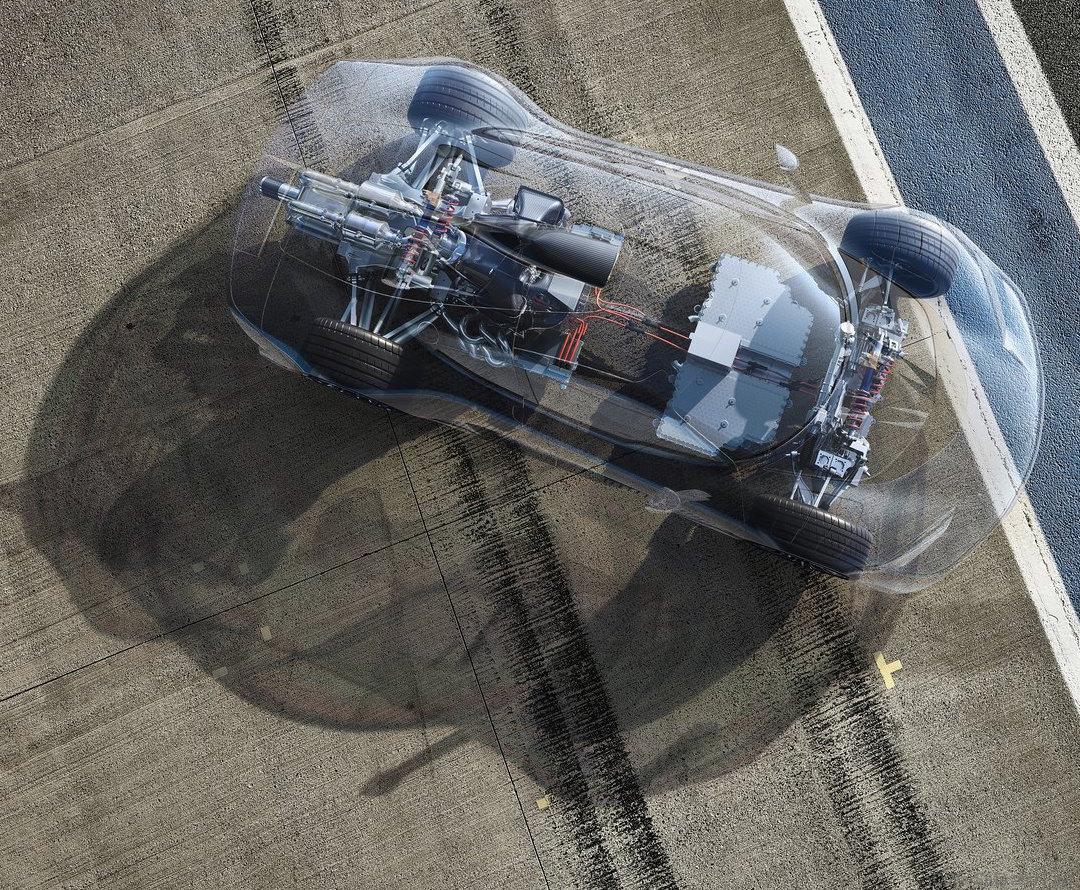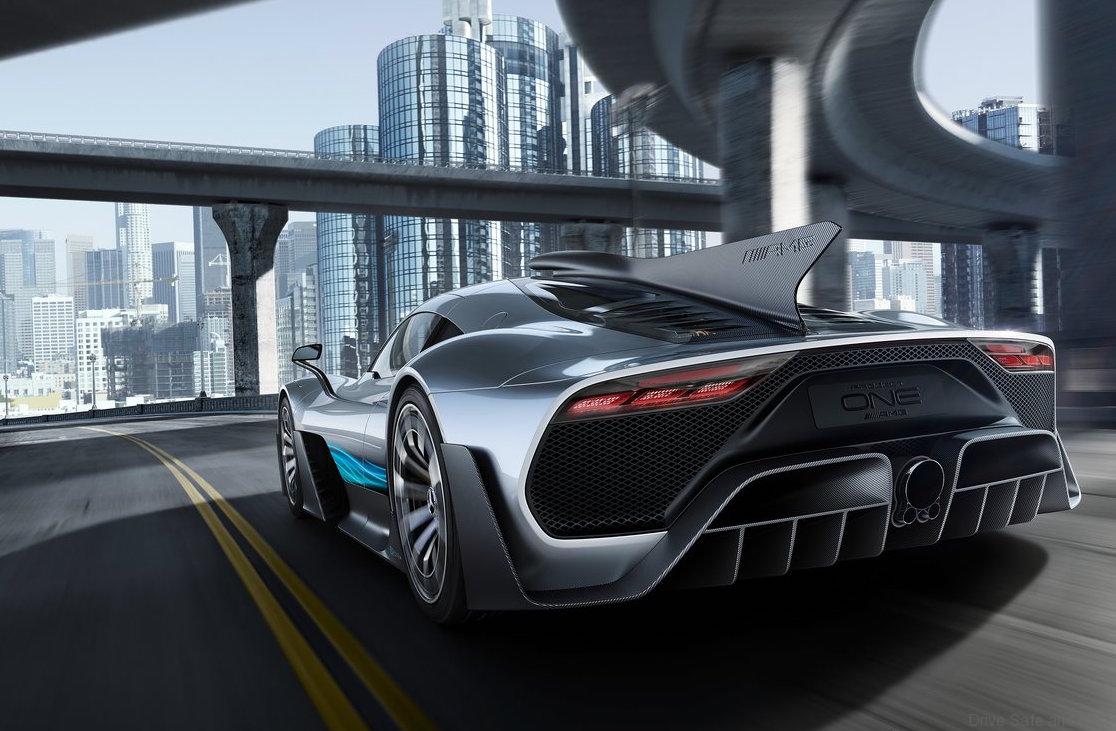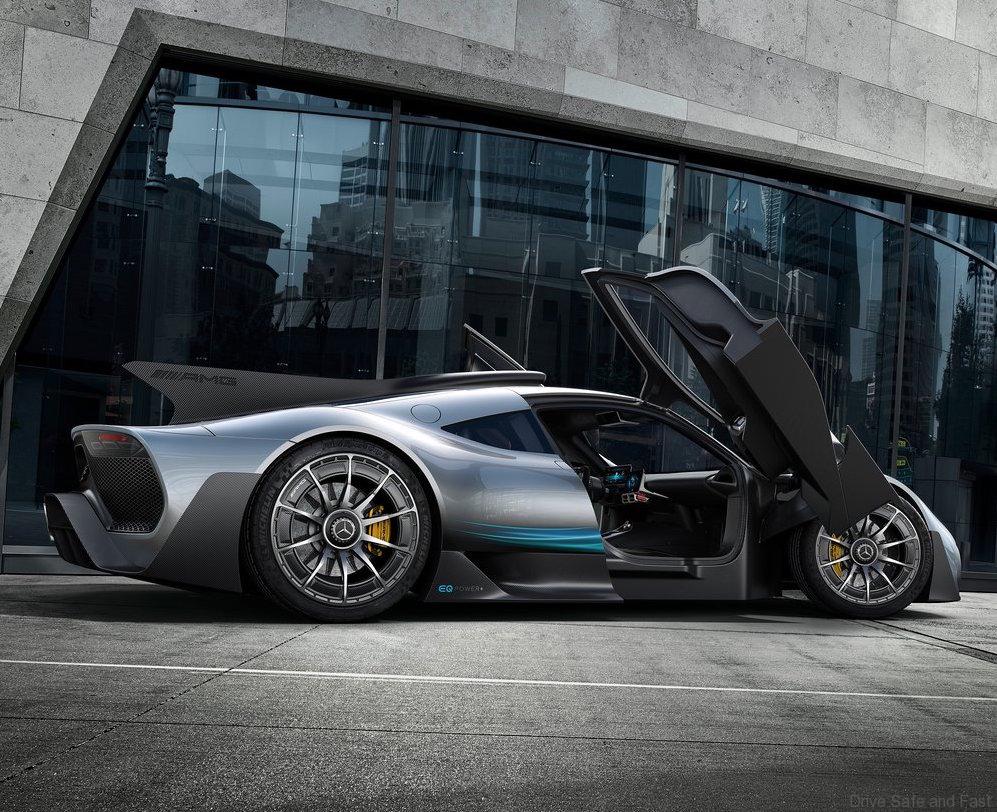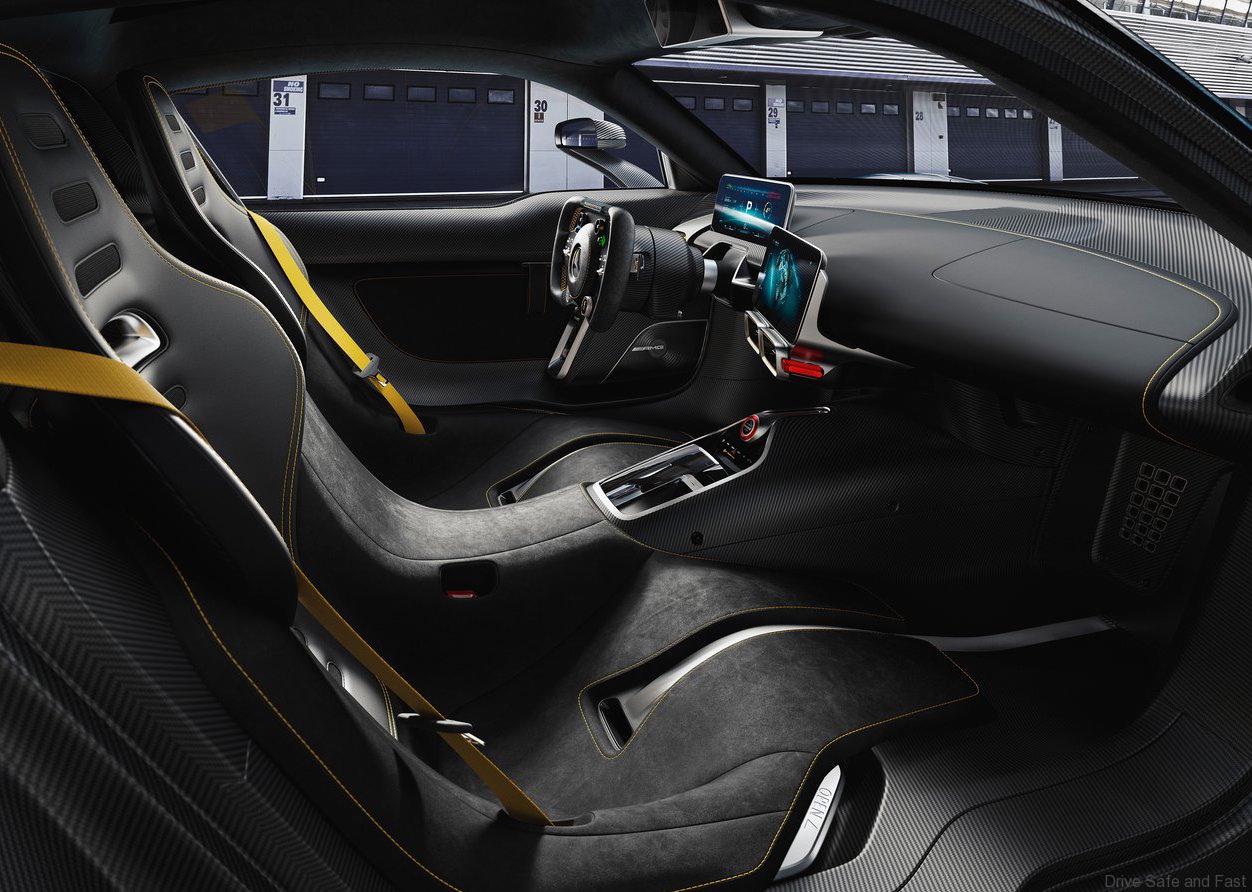The Mercedes-AMG Project ONE celebrates its world première at the 2017 International Motor Show (IAA) in Frankfurt/Main: for the first time, the two-seater supersports show car brings the very latest and efficient, fully-fledged Formula 1 hybrid technology from the race track to the road almost par for par to represent the highlight of AMG’s 50th anniversary. This high-performance hybrid is said to produce over 1000 hp and reach top speeds beyond 350 km/h.
The show car combines outstanding race track performance and day-to-day suitable Formula 1 hybrid technology with exemplary efficiency. This is a world first. The overall responsibility for the realisation of Project ONE lies with Mercedes-AMG.
The complex development work was carried out in close cooperation with the Formula 1 experts at Mercedes-AMG High Performance Powertrains in Brixworth and with the Mercedes-AMG Petronas Motorsport team in Brackley. Together with the four-door AMG GT Concept, the Mercedes-AMG Project ONE provides another insight into the future performance-hybrid drive strategy of the sports car brand within Mercedes-Benz.
Ever since the early days of motorsport, engineers have dreamed of bringing motor racing technology to the road. Mercedes-AMG is now making this dream a reality at the very highest level.
“Motorsport is not an end in itself for us. Faced with intense competition, we develop technologies from which our production vehicles also subsequently benefit. We are drawing on our experiences and successes from three constructors’ and drivers’ world championships to bring Formula 1 technology to the road for the first time: in Mercedes-AMG Project ONE”, says Dr Dieter Zetsche, Chairman of the Board of Management of Daimler AG and Head of Mercedes-Benz Cars.
The concept car gives specific indications of what to expect from the upcoming production model. “The hypercar is the most ambitious project we have every undertaken. It marks yet another pinnacle of the successful, strategic development of Mercedes-AMG towards a performance and sports car brand. Project ONE raises the bar in terms of what is currently technologically feasible and thanks to its combination of efficiency and performance it represents an absolute benchmark. At the same time, Project ONE provides an outlook on how AMG will define driving performance in the future”, Tobias Moers explains as the Head of Management at Mercedes-AMG GmbH.
Powertrain: one turbocharged engine and four electric motors
The high-performance plug-in hybrid drive system of the Mercedes-AMG Project ONE comes directly from Formula 1, and was realised in close cooperation with the motorsport experts of Mercedes-AMG High Performance Powertrains in Brixworth. It consists of a highly integrated and intelligently networked unit comprising one hybrid, turbocharged combustion engine with a total of four electric motors. One has been integrated into the turbocharger, another has been installed directly on the combustion engine with a link to the crankcase and the two remaining motors drive the front wheels.
The 1.6-litre V6 hybrid petrol engine with direct injection and electrically assisted single turbocharging comes directly from the Mercedes-AMG Petronas Formula 1 racing car. The four overhead camshafts are driven by spur gears. To achieve high engine speeds, the mechanical valve springs have been replaced by pneumatic valve springs.
The vehicle is mid-engined (ahead of the rear axle) and it can easily reach speeds of 11,000 rpm, which is currently unique for a road going vehicle. However, for higher longevity and the use of commercially available Super Plus petrol instead of racing fuel, it remains significantly below the F1 engine speed limit.
The electric motors on the front axle are also true rev wonders, with rotor revolutions up to 50,000 rpm – current state of the art is a speed of 20,000 rpm.
The very high-revving engine is additionally boosted by a high-tech turbocharger. The exhaust gas and compressor turbines are separated from one another and located at an optimum position to the exhaust side and to the intake side of the V6 engine, and connected to one another by a shaft. This shaft features an electric motor with approximately 90 kW which, depending on the operating status, electrically drives the compressor turbine with up to 100,000 rpm – for instance when moving off or following load changes. The Formula 1 designation for this unit is MGU-H (Motor Generator Unit Heat).
Lightning-quick response, faster than a naturally aspirated V8 engine
The major advantage: the dreaded turbo lag – the delayed response to accelerator pedal commands owing to the inertia of the large charger – is completely eliminated. The response time is greatly reduced, and is even shorter than that of a naturally aspirated V8 engine. The electric turbocharger brings about another advantage: it uses parts of the surplus energy from the exhaust system to generate electricity, and either stores it in the high-voltage lithium-ion battery as part of recuperation or provides additional drive power by feeding it to an additional electric motor. This motor produces 120 kW, has been installed directly on the engine and features a link to the crankshaft via a spur gear (MGU-K = Motor Generator Unit Kinetic) – another technology that ensures maximum efficiency and performance in Formula 1.
New all-wheel drive with purely electrically driven front axle
There will also be two further 120 kW electric motors at the front axle. Each is connected to a front wheel via a reduction gear. The fully electrically driven front axle allows individual acceleration and braking of each front wheel, and therefore selective torque distribution (torque vectoring) for particularly high levels of vehicle dynamics. With the axle motors, we estimate that up to 80 percent of the braking energy can also be optimally used for recuperation under everyday driving conditions. This energy is stored in the battery and is available for a longer electric range. Each electric motor is controlled by its own power electronics located in close proximity to the electric motors in the floor assembly.

